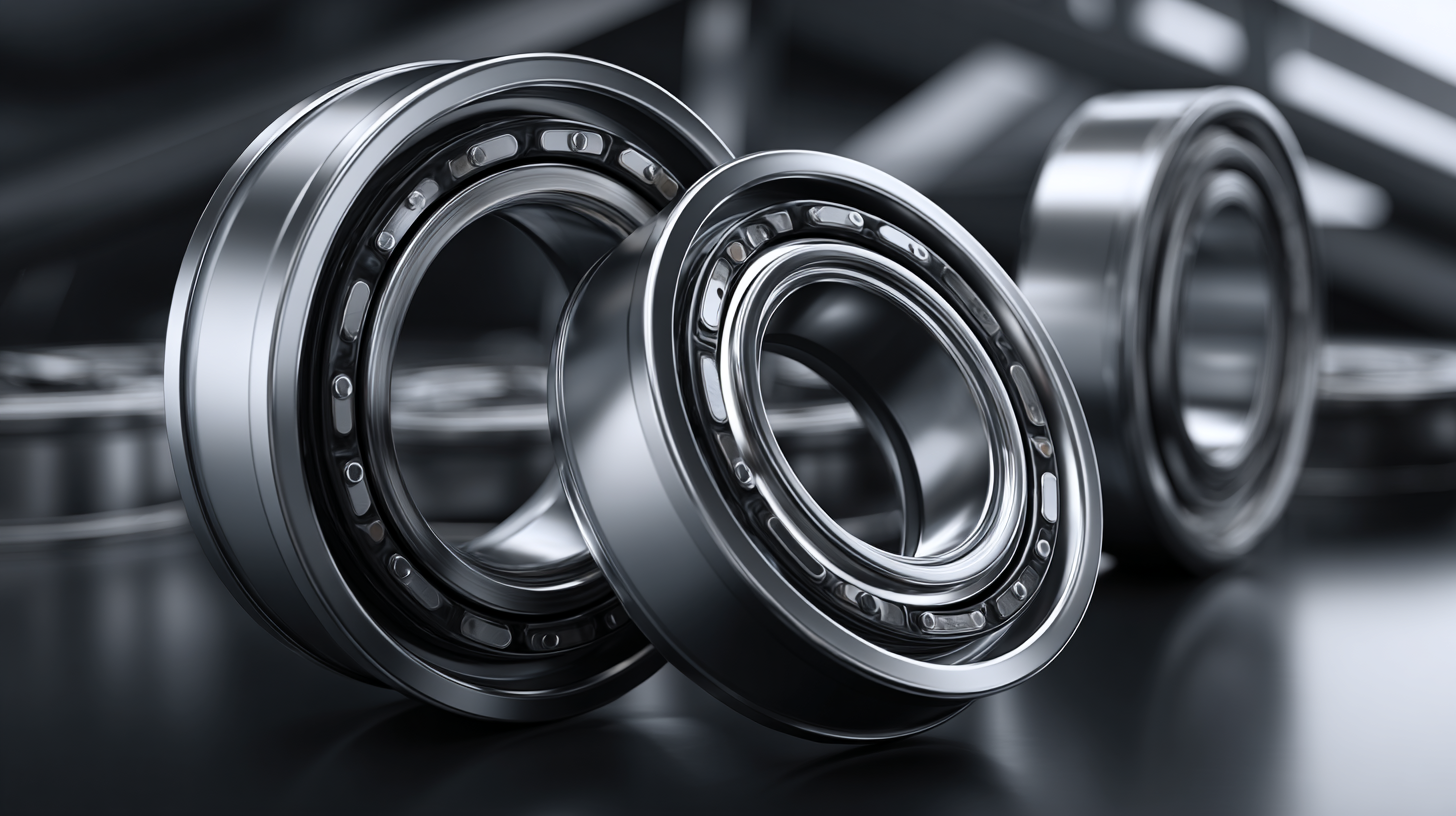How to Choose the Right Angular Contact Bearings for Your Application
When it comes to selecting the appropriate components for precision machinery, the choice of angular contact bearings plays a crucial role in ensuring optimal performance and longevity. These specialized bearings are designed to support both radial and axial loads, making them ideal for applications that require high-speed rotation and angular alignment.
However, with a variety of designs, sizes, and material options available, choosing the right angular contact bearings can be a daunting task. This guide aims to simplify the selection process by outlining key considerations, including load capacity, operating environment, and installation needs.
By understanding the specific demands of your application, you can make informed decisions that enhance efficiency and reliability, ultimately leading to improved operational outcomes.
Understanding the Basics of Angular Contact Bearings and Their Applications
Angular contact bearings are specialized components designed to accommodate both axial and radial loads, making them ideal for high-speed and high-precision applications. Unlike standard ball bearings, angular contact bearings feature raceways that are angled relative to the bearing axis, allowing them to handle significant axial forces in one direction. This distinct design is crucial for applications such as aerospace, automotive, and industrial machinery, where performance reliability and precision are paramount.
According to recent market research from Credence Research, the global bearing market is projected to reach USD 60 billion by 2027, with angular contact bearings seeing a substantial growth rate due to their increasing use in advanced technological applications. In fact, a report by Transparency Market Research indicates that the demand for angular contact bearings in the aerospace sector alone is expected to grow at a CAGR of 5.4% from 2020 to 2027. Understanding the specific load requirements, speed, and orientation of your application will help in selecting the appropriate angular contact bearing that meets these demands effectively.
Key Factors to Consider When Selecting Angular Contact Bearings
When selecting angular contact bearings for your application, several key factors must be considered to ensure optimal performance and longevity. Understanding the load requirements is crucial; these bearings are designed to handle combined loads from radial and axial directions, making them suitable for high-speed applications. The bearing's contact angle plays a significant role in its load capacity and stiffness, with larger angles providing better axial load handling characteristics.
Additionally, the operating environment impacts selection. Factors such as temperature, humidity, and potential contamination should influence your choice. For instance, in applications like high-speed train traction motors, where thermal characteristics are a concern, it is vital to select bearings that can withstand high operating temperatures and thermal stresses, as these can significantly affect performance. The global bearings market is on a growth trajectory, projected to increase from USD 50.16 billion in 2025 to USD 97.10 billion by 2030, driven by advancements in technology and the rising demand from sectors like electric vehicle adoption and industrial automation.

How to Determine Load Requirements for Your Angular Contact Bearings
When selecting
angular contact bearings, understanding the
load requirements is crucial for ensuring optimal performance and
longevity in your application. The load requirements can be categorized into
axial loads,
radial loads, or a combination of both. First, assess
the operational conditions your bearings will face, including the nature and magnitude of
the forces involved. This will provide a foundation for determining the necessary specifications.
Once you have a clear understanding of the load types, consult the bearing manufacturer's
load rating charts to identify suitable bearings based on calculated load capacities.
It is essential to account for
dynamic and
static load ratings, particularly in dynamic applications.
Additionally, consider factors such as
mounting tolerances and
misalignment that may affect load distribution within the bearing,
influencing its overall efficiency and durability. By carefully evaluating these aspects, you can
choose the right angular contact bearings tailored to your
specific load demands.
Evaluating Bearing Orientation and Installation for Optimal Performance
When selecting angular contact bearings, the orientation and installation are crucial factors that significantly influence their performance. The design of angular contact bearings allows them to handle axial loads in one direction, which makes it essential to position them correctly within the application. Misalignment during installation can lead to uneven load distribution, resulting in premature wear or failure. Therefore, understanding the intended load direction and ensuring precise alignment are fundamental steps in achieving optimal functionality.

Moreover, the installation process requires careful attention to detail. Proper preload is necessary to enhance the performance of angular contact bearings, as it minimizes radial play and stabilizes the bearing during operation. This can be achieved through adjusting the spacing between bearings (if multiple are used) or through the use of support structures that maintain consistent pressure. Taking the time to evaluate these factors during installation will not only improve the bearing's lifespan but also enhance the overall efficiency of the machinery in which it is utilized. Each step, from selecting the appropriate orientation to ensuring proper preload, plays a pivotal role in achieving peak performance from angular contact bearings.
Common Mistakes to Avoid When Choosing Angular Contact Bearings
When selecting angular contact bearings for your application, it's crucial to avoid common mistakes that can lead to performance issues. One frequent error is neglecting to consider the load direction. Angular contact bearings are designed to handle axial loads in a specific direction, so failing to match the bearing's specifications with the application requirements may result in premature failure or reduced efficiency.
Another mistake is underestimating the importance of speed ratings. Different angular contact bearings have varying speed capabilities, and using a bearing rated for lower speeds in a high-speed application can generate excessive heat and lead to failure. Additionally, overlooking proper clearance and preload can severely impact the bearing's performance. Too much clearance may result in reduced rigidity while excessive preload can increase friction and diminish lifespan. Careful attention to these aspects is essential to ensure optimal functionality and longevity of the bearings in your application.
How to Choose the Right Angular Contact Bearings for Your Application
| Dimension |
Value |
Common Mistakes to Avoid |
| Inner Diameter (mm) |
20 |
Ignoring clearances affecting performance. |
| Outer Diameter (mm) |
42 |
Not consulting application load specifications. |
| Width (mm) |
12 |
Overlooking lubrication requirements. |
| Load Rating (kN) |
15 |
Miscalculating the dynamic load factor. |
| Contact Angle (degrees) |
15 |
Choosing the wrong contact angle for the load direction. |